- Elements of Well-Being5570 Sterrett Place Suite 308
Columbia, MD. 21044 - 207 Ridgely Ave.
Annapolis, MD. 21401443-996-2069 -
Latest Articles:
- • The Best Ways to Protect Your Skin from the Sun This Summer •
- • Savoring Summer with Recipes Using the Best Summer Ingredients •
- • Top 5 Best Staycation Ideas for Summer •
Health WellNews
Improve Your Mental Health with Regular Meditation

Meditation has a reputation for several health benefits but what is it exactly? It is defined as the regular process of training your mind to focus and redirect your thoughts. There are some key reasons you might want to consider establishing a regular meditation routine. The overall improvement in your health and wellbeing just might surprise you.
Research proves that meditation can really be a stress reducer. Too much stress in your life can cause sleep issues, depression, anxiety, and even high blood pressure. An 8-week study published in 2013 found that “mindfulness meditation” actually reduced the inflammatory response caused by too much stress.
As mentioned previously, as stress levels decrease, so does anxiety. A 2014 study examined the transcendental meditation technique and found that it reduced anxiety significantly. However, that’s not the only technique that reduces anxiety. Additional research has found that a variety of techniques can reduce anxiety levels. It doesn’t matter what technique you try, just get started!
After the pandemic, we all know just how important it is to maintain our mental health. Regular meditation has been shown to reduce the symptoms of depression by decreasing the levels of inflammatory chemicals called cytokines, which are released in response to stress. It can also help people experience fewer negative thoughts.
Studies also show that regular meditation practices can lead to enhanced performance on visual tasks and a greater attention span than those who don’t regularly practice meditation. And you don’t need to set a goal of meditating for hours on end. Other studies have indicated that even short periods of meditation each day can be a benefit.
And, in case you haven’t noticed yet, each of these benefits just continues to cascade to additional benefits! Now that you know that regular meditation can lead to improvements in attention and clarity, you might be happy to hear that both benefits lead to keeping your mind young and healthy overall.
Studies have found that in addition to fighting the normal age-related memory loss that comes from getting older, meditation can at least partially improve memory in those suffering from dementia. It can also help to control stress and improve coping skills in caregivers.
Even the Mayo Clinic touts the benefits of meditation. They also outline the different types including guided meditation, mantra meditation, mindfulness meditation, Qi gong, tai chi, transcendental meditation, and yoga. They also advise that meditation takes practice, and you will get better at maintaining your focus and breathing the more you engage in the practice.
The bottom line is that meditation is something that everyone can try to improve their mental and emotional health. You don’t have to have a particular level of athletic ability; it doesn’t require a special location or equipment and you don’t have to buy a membership at a gym to try it. A simple Google or YouTube search can get you started. Trying out a variety of styles to see what might work best for you is a great way to begin your meditation journey.
Staying Active and Healthy in the Warm Summer Months
After the cold winter and unpredictable Spring weather we’ve been having, everyone is ready for a warm summer with longer days filled with rest, vacation, and family time. However, the warmer temperatures can often bring unanticipated health risks like seasonal allergies, heat stroke, and bug bites. Read on for a few tips to keep you not only active, but healthy as you embrace those dog days of summer.

Get Moving!
The summer months are a great time to get outside and get moving, especially if you live in a climate that doesn’t allow you to get out much during the winter and early spring months. That additional physical activity can lead to healthy hearts and maybe a trimmer waistline. As the temperatures heat up, it might be tempting to stay inside and enjoy the air conditioning but don’t fall for an all or nothing trap! If it gets too hot in your area, take a walk or an early morning bike ride before the heat is unbearable. If early mornings aren’t your thing, try a late evening stroll to get a little extra fitness in your day.
If you are lucky enough to live near the ocean or close to national parks, then hiking and biking on those gorgeous trails should be on your summer to-do list. A jog along the beach or an ocean swim are also great options. And don’t forget, your body isn’t the only thing that will benefit from the increased physical activity, your mind with thank you as well. Exercise is a great way to boost your mental health and improve your sleep.
Don’t Forget the Sunscreen
While getting outdoors is great, it also comes with risks. Too much UV light from the sun can be hazardous to your health, contributing to skin damage and increased cancer risk. Too much UV exposure can lead the skin to lose elasticity, get deeper wrinkles, and contribute to an overall premature aging of the skin.
To protect yourself, make sure you choose a broad-spectrum sunscreen that blocks both UVA and UVB rays and with a sun protection factor (SPF) of at least 50. And make sure you reapply your sunscreen after swimming or sweating. Getting outside is great for your mental and physical health but not if you burn in the process!
Stay Hydrated
In addition to sun protection, it’s important to make sure you are consuming plenty of fluids in the warmer temperatures. It might be tempting to indulge in those fruity alcoholic drinks, but they are not effective against dehydration, and neither is caffeine. They make it more difficult for the body to stay properly hydrated because they increase the body’s fluid output. Chronic dehydration can lead to serious complications such as kidney failure and shock.
Signs you might be dehydrated include:
- Dry mouth
- Headache
- Dizziness
- Muscle cramps
- Little or no urination
Saying healthy and active is definitely doable over the summer with just a little bit of planning and awareness. So, get outside and enjoy these long, warm days while you can!
Three Tips to Stay Mentally Strong This Summer
While many look forward to the summer months filled with vacations, time outside, and less structure, others can feel overwhelmed and out of control. For those struggling with anxiety or depression, the care-free days of summer can feel anything but. Read on for three simple tips to help keep your mental health in check this summer.

Tip #1: Get Outside and Get Active
The first tip is to get outside and get moving! Getting regular exposure to natural sunlight increases your level of vitamin D and serotonin which are known mood-boosters. Take an evening or early morning walk to beat the heat, take a walk on the beach and feel the sand between your toes and the waves lapping at your ankles, or simply sit on a porch and watch the sunset. Outdoor hobbies like gardening, biking, or hiking are also great ideas to incorporate into your summer plans.
If you aren’t the gym type, try a simple yoga class or just taking a walk outside. It’s easy to use the heat as an excuse to binge-watch Netflix and chill, but don’t do it! Even just 20 to 30 minutes of activity each day can help you feel fit and boost your mood. You will be surprised by how good you feel as you develop this habit over the summer.
Tip #2: Plan a Vacation
Everyone needs a little getaway now and then and using your vacation time to plan a trip and unplug is key to refocusing your energy and clearing your mind. It’s tempting to use your vacation time to accomplish household chores or other things that need to get done in your personal life, but you also need to enjoy yourself and recharge your batteries.
If funding limits how far you can travel, a staycation works, too. Just don’t try to clean the garage or remodel your kitchen. Read that bestseller you’ve been putting off, hit a local pool or the beach if you live close by. Take a day trip to a museum or water park to get a change in scenery. Just do something fun! Getting away from your everyday routine can clear your mind and boost your mood. It’s important to unwind and refocus when you can.
Tip #3: Establish a Healthy Sleep Schedule
With summer comes relaxed bedtimes and sleeping in later than usual. But just because you can doesn’t mean you should. Experts recommend 8 to 10 hours of uninterrupted sleep per night and going to bed and waking up at about the same time every day helps, too. This doesn’t mean you can’t occasionally indulge in a late morning, but keeping things consistent helps you maintain good sleep hygiene habits which also contributes to your physical and mental well-being.
Use these tips to check in with yourself and make sure you are on track to stay physically and mentally strong this summer.
Planning the Perfect Summer Vacation
It’s that time of year when the perfect summer getaway is within reach. Whether you are looking for a beach vacation or a mountain retreat, it’s never too early to begin researching the perfect summer vacation. Here are a few suggestions to get you started and ensure a successful and relaxing trip!

Book Early vs. Last Minute Deals
The summer season is often the peak vacation time for many destinations so if that’s the case with your preferred location, you might want to book early to take advantage of any flight, hotel, or rental car deals. Set alerts or, if you can be flexible, fly during non-peak times during the week as opposed to the weekends. You can also set alerts for your preferred hotel company or join their loyalty program to take advantage of any offers there.
While planning ahead can be a great way to score a deal before prices rise, sometimes leaving a little wiggle room for any last-minute deals can score even bigger savings. Venues might offer discounts for unclaimed tickets or cancellations. Don’t be afraid to ask about any sales or promotions. It’s always best to keep your options open!
Get Family Buy-In
You might have grand plans about a Hawaiian beach getaway, while the rest of the family is thinking theme park extravaganza. It’s important when planning a family vacation that you get buy-in from everyone on the location and itinerary. Make sure you include activities for each member of the family and get everyone involved in the planning process. When everyone is excited and looking forward to going, you won’t have unexpected battles to fight down the road. Pro tip: If you have kids, keep them busy wherever you go! From activities to keep them busy on the flight to daytime fun when you reach your destination, you want to make sure the kids are active enough to have fun and be ready for bed when the day ends.
Less Stress, More Relaxation
Everyone in your family may have a different idea of what a stress-free and relaxing vacation looks like. Some people like to pack every minute full of activities as they explore a new place while others want to lie on the beach or by the pool all day every day. No matter what your speed, plan some time to relax and take in your surroundings.
And definitely don’t add unnecessary stress to your vacation. If flying is too much for your family, consider a road trip. If getting to the airport is the most stressful part of the trip, consider a ride share option so you don’t have to worry about parking. Also, check your credit card rewards to see if you have access to an airport lounge. A lounge is a great way to relax before a flight.
And the most important advice is to enjoy the experience and make memories with your friends and family no matter where your trip takes you.
Healthy Choices for a Healthy Spring
After a long cold winter, Spring is a time for renewal and growth. The flowers and trees begin to bloom once again and the grayness of winter transitions to the brightness and warmth of Spring. If you have struggled to keep those New Year’s resolutions going, Spring is a great time for a fresh start with healthy choices. Here are a few tips to keep you and your family healthy and ready to enjoy the longer days of summer that are just around the corner.
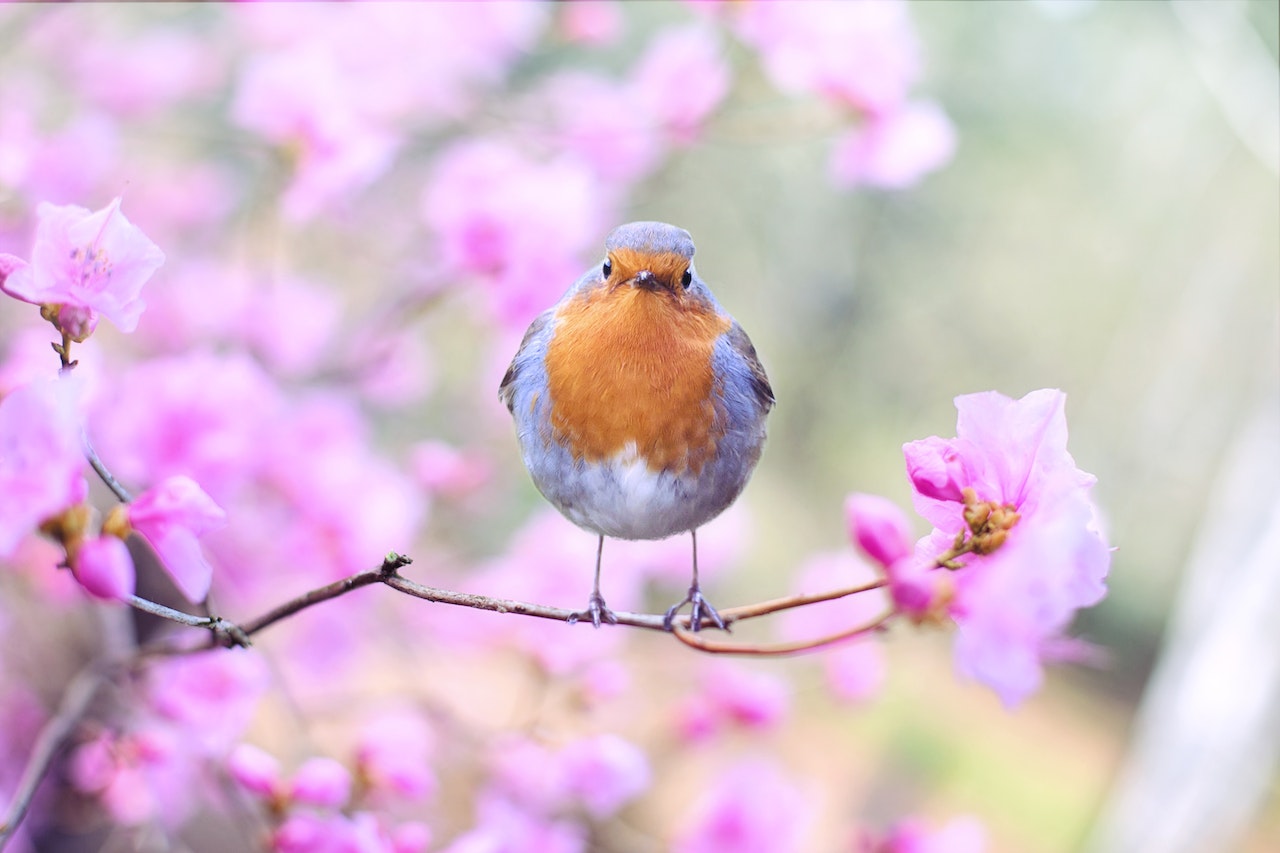
Freshen Up Your Fitness Routine
If your fitness routine didn’t get off to a great start in the new year, it might be time to shake things up a bit as you head into Spring. With warmer temperatures and longer days, rethink how you approach your fitness plan and look at it as a chance to have some fun. Sign up for a 5k or join a weekend softball or basketball league. Pickleball and tennis are gaining in popularity across the country as well. And if a team sport isn’t your cup of tea, try hiking, biking or swimming.
Freshen Up Your Diet
Spring fruits and vegetables are coming back into season, so this is a great time to choose unprocessed whole foods rather than those full of sugar and preservatives. Avoid foods with corn syrup, dextrose, and fructose. If you are prone to afternoon snacking, choose raw foods like nuts, carrots, zucchini, or broccoli. Spring fruits and veggies are loaded with fiber, vitamins, and other nutrients so hit that farmer’s market and stock up on the bounty of options.
Freshen Up Your Me Time
Whether single or married, kids or not, it is important to schedule some “me” time and make it a priority, just as you would a doctor’s appointment. And it doesn’t have to be a long time and it doesn’t have to be complicated. It could be something as simple as a morning walk before work with a good cup of coffee in hand. Or it could be a hot soak in the tub with a glass of wine and a good book. Or it could be time spent in the garden after a long day of sitting at your desk. And if you try something you thought would nourish your soul and it doesn’t, don’t be afraid to try something else.
Freshen Up Your Social Life
Use these longer days to connect with people in your life. Schedule game nights, movie nights, walks, hikes, or happy hours to enjoy time with family and friends. Force yourself to do a digital detox and put down the phone, tablet, or laptop and step away from social media. Other ideas include volunteering, getting involved in a new hobby or sport are great ways to meet people and connect in new communities.
Bonus Tip
Another great tip is to make sure you are getting enough sleep every night. It is best for adults to get at least seven hours of sleep per night. Establishing all these healthy habits in Spring can set you up for a great summer and beyond.
Tips and Tricks for a Sparkling Spring
For some, Spring cleaning is a productive and anticipated right of passage each year. It’s a time to stock up on essential cleaning and organizational supplies and deep clean the house. For others, it’s a dreaded time to confront the messiness and chaos that can come with a long cold winter. Here are a few tips and tricks to get your Spring cleaning under control and make it less overwhelming.
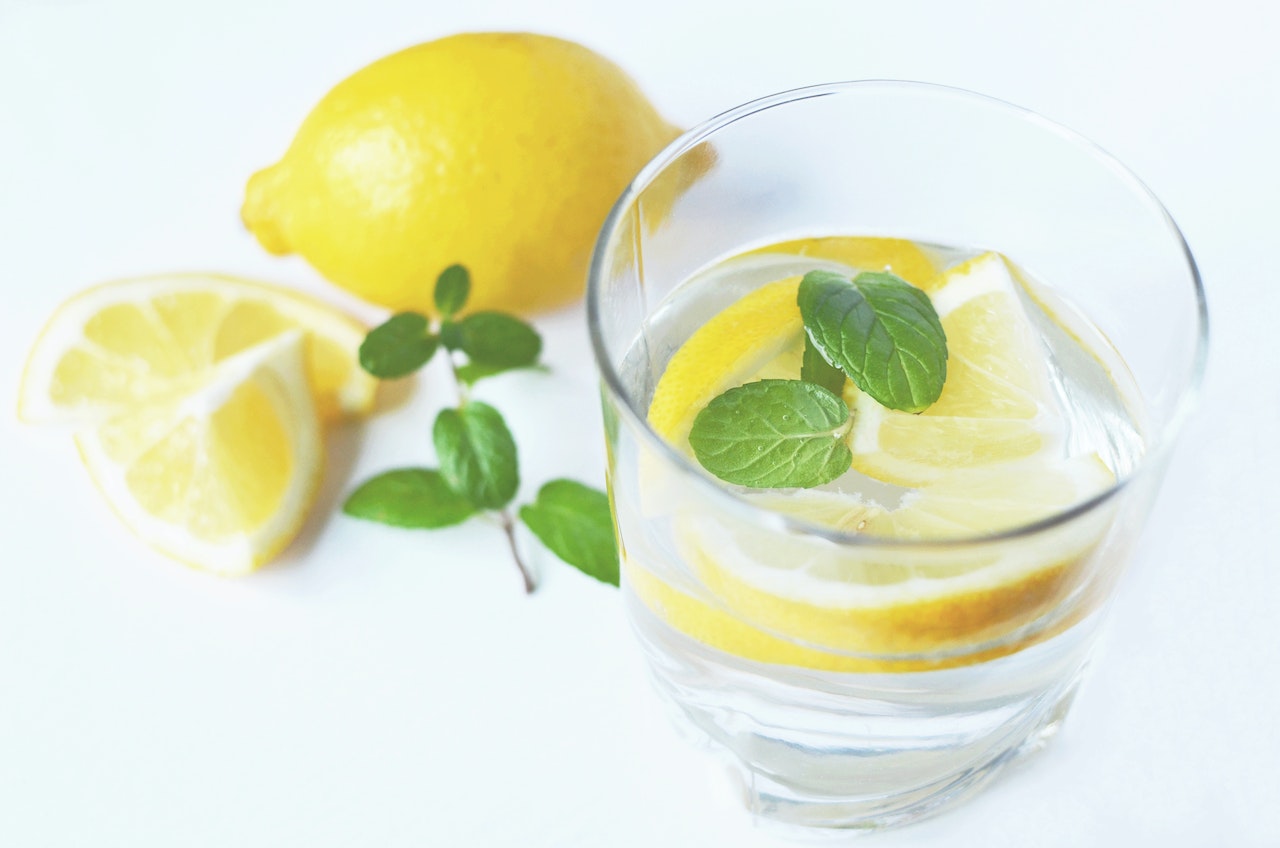
Make it Manageable
The first tip is to break down your Spring-cleaning chores into more manageable chunks. Set the timer on your phone for 15 minutes and then tackle some simple tasks like dusting open surfaces and ceiling fans, door frames and switch plates, or baseboards. This can help you feel like you are accomplishing something without spending a ton of time. Using microfiber cloths and mops can help you pick up dust in a flash.
Make Your Own Cleaning Solution
If the chemicals in store bought cleaners concern you, make your own natural cleaning solution with ingredients you probably already have on hand. Combine the following ingredients in a spray bottle and shake it well:
- ¾ cup of water
- ¾ cup of rubbing alcohol
- 5 to 10 drops of peppermint, lemon, or orange essential oils
- 1 squirt of natural dish soap
Once your mixture is complete, spray on to surfaces and wipe with a clean cloth.
Keep Your Shower Clean
One easy way to keep your shower clean is to keep supplies in there so you can clean while you are in the shower. Keep a squeegee in the shower so you can wipe down the walls. Keep a spray bottle or dish wand with equal parts dish soap and vinegar in the shower to scrub things down and keep the potential mess under control.
Remove Stains
If your favorite coffee or tea mug is embarrassingly stained, use a little baking soda to make them like new. Fill the mugs with one part baking soda and two parts water. Then let it sit overnight and in the morning clean it out with a sponge.
Use the Right Tools
There are lots of tools to help you clean the toilet quickly and without getting too close to the mess. There are also some great tools to help you clean your blinds and windows. When the days get longer and sunnier, you want to open the blinds and windows, right? And that’s when you notice the dust on the blinds and smudges on the windows. Use tools that help you dust multiple blinds at once. And there are tools to help you tackle those hard-to-reach corners and tall windows.
Tips and tools abound to help you get your living space sparkling clean for Spring and beyond so take advantage of what’s out there and tackle what you can in small bites and before you know it, your house will be a place of refuge and comfort.
Fitness Routine Spring Cleaning
With warmer temperatures and longer days, it’s time to evaluate your fitness routine and give it a Spring overhaul. While we might find comfort in being creatures of habit, it’s important to frequently switch up your fitness routine for a few different reasons. One reason is to avoid hitting a fitness plateau. But how do you know when it’s time for a change? If any of the following apply to you, it might be time to freshen things up.
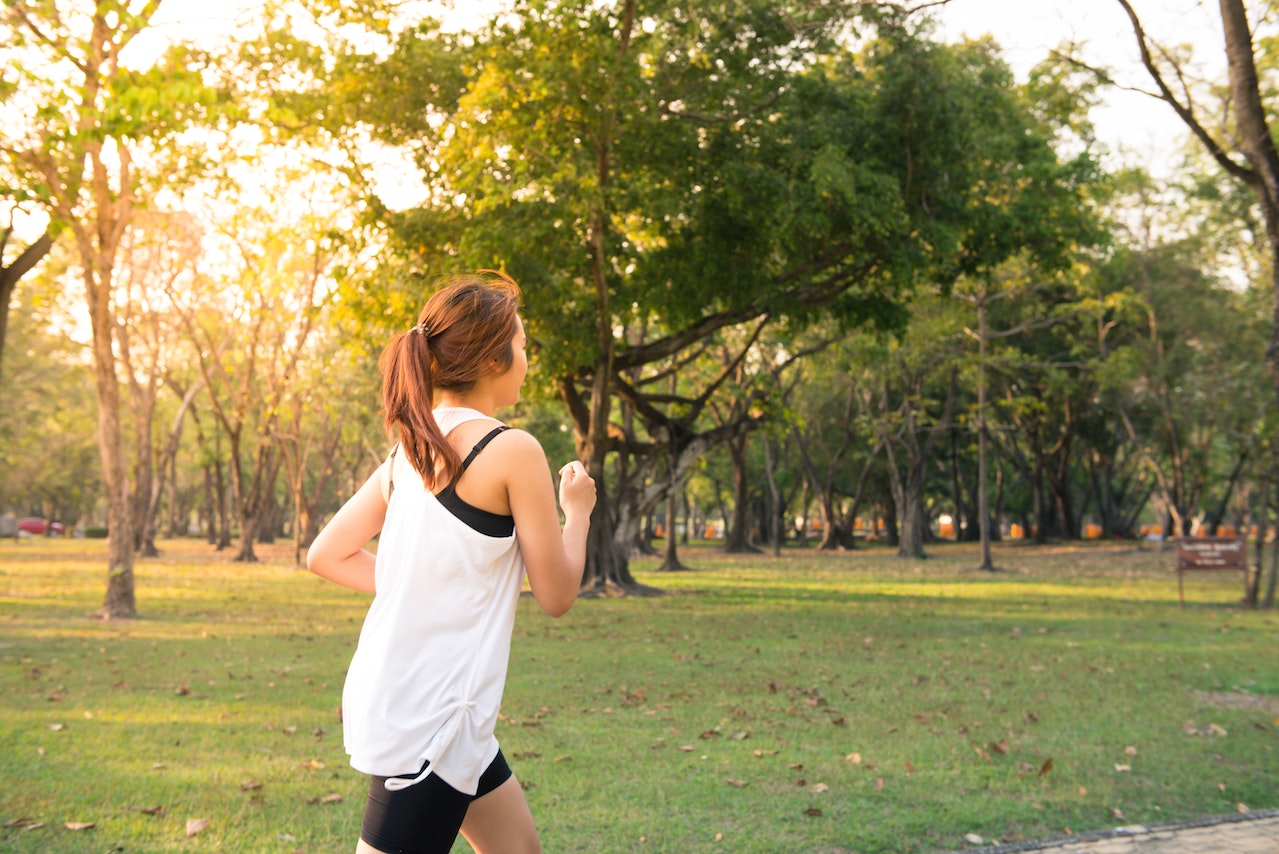
If your routine brings with it a sense of dread, it might be time to try something new. If you stop seeing results and you aren’t making any forward progress, then it’s time to make a change. If you feel unusually tired rather than energized after your routine and you watch the clock to count down the minutes, then you definitely need to switch things up.
Evaluation is Key
Before you just change everything up, make sure to take some time and evaluate your routine and how it relates to your fitness goals. Does your current routine challenge you? Do you look forward to your workouts or dread them? With Spring here, there are lots of options to explore to help you switch up your routine.
The first thing you can take advantage of with longer days and warmer temperatures is to take your workout outside. Sometimes a simple change in scenery is all it takes to snap out of a dull routine. Some cities offer classes in the park like yoga or aerobics or even an early morning fitness boot camp.
You also might consider registering for a running club or just register for a 5k or hiking challenge. And with longer days, you can get up earlier to work out before your day fully begins. And add a little variety to your routine by including some free weights, resistance bands, or Kettlebells. Sometimes, a new pair of shoes or yoga pants can provide just the right amount of motivation.
And if none of that works to infuse a little energy into your fitness routine, try a new class or take a lesson. Group fitness classes can provide you with a connection to a new community and new forms of movement. Take a golf or tennis lesson with family and friends. This can also be a way to get your friend group or family out for some fresh air and activity.
Whatever you decide to do, make sure that you enjoy it. If you dread your workout, then you aren’t going to reach your goals or enjoy the journey. If something isn’t working, don’t be afraid to try something new. Everyone’s routine and goals are different and as individualized as you are. Find the formula that works for you and don’t be afraid to make adjustments along the way.
Three Steps to Keep Winter Allergies at Bay
You might think that the cold winter season would bring relief for seasonal allergy sufferers, however, it just brings about a different set of indoor allergens. As those colder temperatures become the norm, people tend to spend more time indoors which brings them into contact with indoor allergens.
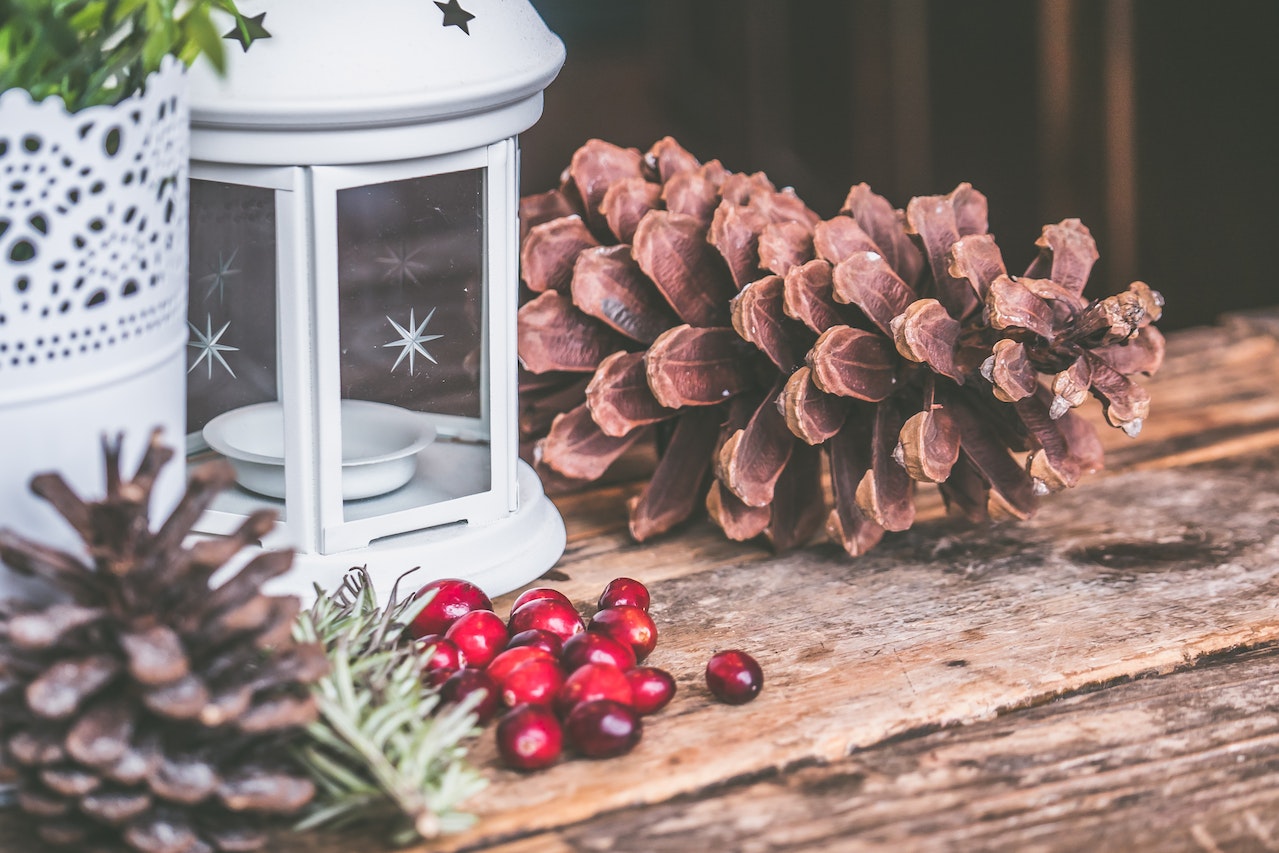
Inside Allergy Triggers
These indoor allergy triggers have likely been in your house all year, but when you hibernate inside during the colder months with the windows closed and the heat on, they tend to become more pronounced. Some of the major triggers include dust particles, mold and mildew, and pet dander.
Perhaps the most unique winter allergy that really is a part of the season is Christmas tree allergies. This can be a complex problem as it could be an allergy to pine (or the tree itself) or the tree could be covered in allergens like pollen or mold spores. If you are sensitive to smells, the strong odor might be an issue throughout the Christmas season.
Outside Allergy Triggers
If you live in a wet and rainy area, outdoor mold can begin to form in late winter and early Spring. Much like an allergy to pine, cedar pollen can create havoc for people sensitive to this allergen. Cedar is largely contained in the areas of Southern Missouri, Oklahoma, central and western Texas and Northern Mexico. This allergy is often referred to as “cedar fever.” The cedar pollinates from December through March and can sometimes release so much pollen it looks like the trees are emitting smoke.
Allergy Symptoms vs. Cold Symptoms
Sometimes it can be difficult to tell if you are suffering from allergies or a cold as some of the symptoms might be the same or similar. Common allergy symptoms include sneezing, a stuffy or runny nose, itchy eyes, ears, or throat, dry coughing, or a low-grade fever. In severe cases, symptoms can be related to asthma and include chest tightness, wheezing, rapid breathing, and feelings of exhaustion.
The way to tell the difference between allergies and a cold is to examine the source. Colds come from a virus that is passed by someone infected with it. Once your body fights off the infection, the cold symptoms end. Allergies come from your body’s release of histamine as a response to the allergens. Symptoms will persist if you are breathing in the allergens.
Treatment Options
There are many different treatment options depending on the severity of the symptoms. Over-the-counter antihistamines are a common course of action for many allergy sufferers. Nasal irrigation or using distilled water to flush out nasal passages, is another option. Nasal sprays are also common and for those who have severe symptoms, allergy shots are an option.
If you are looking for a drug-free alternative, acupuncture has also been proven a successful treatment option. As a general assessment, typical allergy acupuncture treatments will involve weekly or twice-weekly appointments spanning several weeks or even months depending on the symptoms. Your acupuncturist can then determine if annual or semi-annual treatments are needed to maintain results.
The root cause of allergies is different for everyone. Another option your acupuncturist might explore with you is to add herbal formulas to your treatment plan as this can greatly increase the efficacy of the treatments. Adding herbal formulas along with the traditional needle treatment can be an effective one-two punch for treating winter allergies.
Prevention
Some easy steps to take as you head into the cold winter months is to regularly wash clothes, bedding, and any removeable upholstery covers. This helps to reduce the pet dander and dust build up. Regularly vacuum your home and in severe cases, you might want to think about removing carpet and replacing it with tile or wood flooring. Seal any cracks or openings near windows and doors and fix any leaks so mold doesn’t have the chance to form. Do what you can to limit exposure and keep your environment allergen free so you can feel better overall.
Healthy and Hearty Winter Recipes
When the weather gets colder there is nothing better than a warm and comforting bowl of goodness to keep the chill away. But sometimes the challenge is to keep things healthy as the temperatures drop. We often tend to drift away from our fresh vegetable dishes of summer into carb heavy dishes of pasta and other carbs. That is all fine in moderation, but if you are looking to keep things healthy through the winter, this recipe is a great way to eat the rainbow.
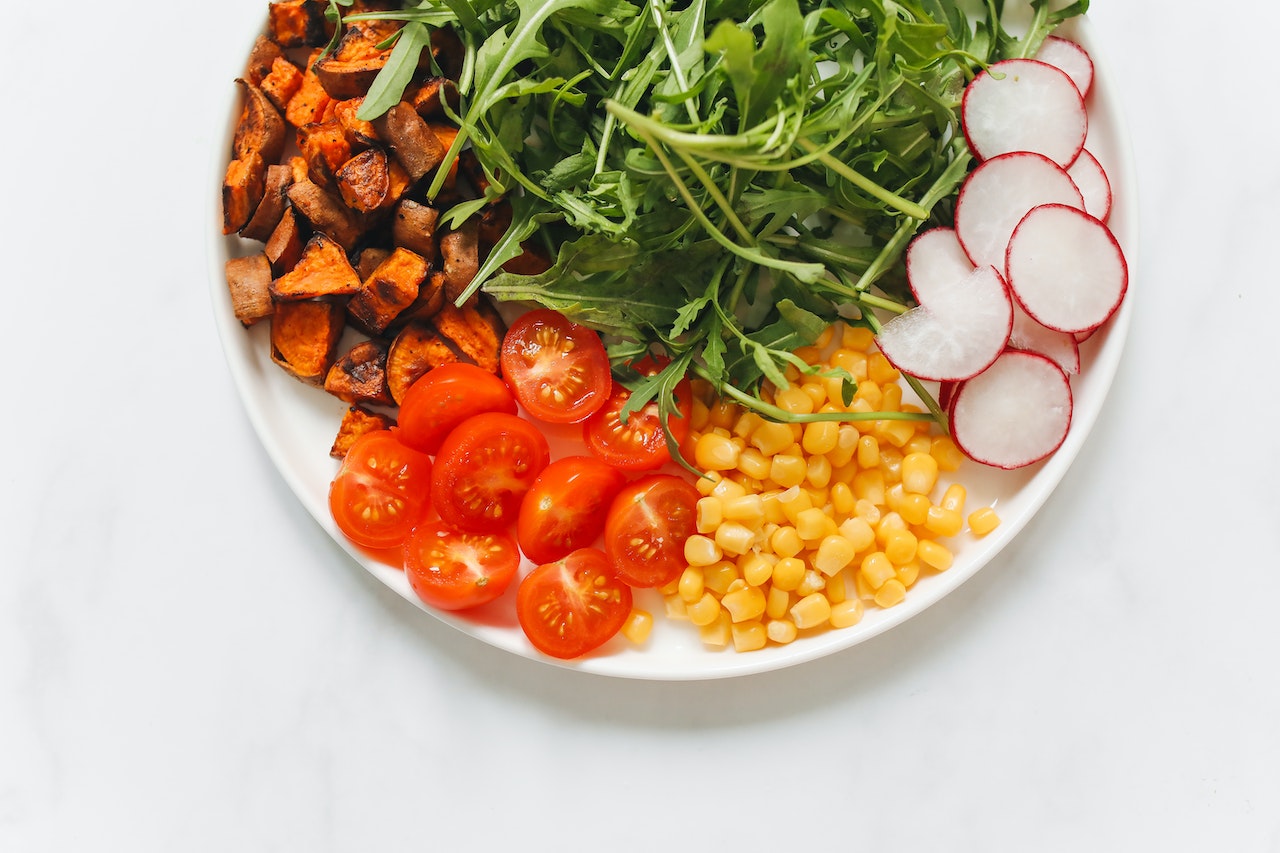
During the long, dark nights of winter, it can be a treat to find something colorful, warm and filling to eat. Bowls are a great way to incorporate different food groups, keep an eye on portions, and still find the comfort that comes from a warm dish on a cold night.
Some nutritionists call these types of bowls “nourish bowls” and they are completely customizable depending on what you like and what’s in your pantry at the moment. They are perhaps the easiest way to incorporate grains, protein and lots of veggies. They are also a great way to mix textures and different flavors and if you have picky eaters in your family, remember they are customizable so you can incorporate different toppings to suit the needs of your household. And another pro tip, these are excellent options for meal prep so you can enjoy a warm, comforting, and nourishing dish whether you are working from home or heading to the office.
This recipe is just a sample of one bowl option. Remember, you can customize to what you like. This bowl will definitely help you to eat the rainbow during winter.
Ingredient Options
Start off with some sweet potatoes for a satisfying orange base. You can roast them in the oven alongside some chickpeas and spice them up for extra flavor. Quinoa can add some protein and bulk to your bowl. Kale and spinach add that nice leafy green touch of freshness. Red cabbage adds another touch of crunch and freshness, and Tahini makes a great base for sauce or dressing to toss with your bowl.
Assembling Your Bowl
After you have seasoned and roasted your sweet potatoes and chickpeas on a baking sheet for 25 minutes at 350 degrees, you can toss your kale with apple cider vinegar and salt and spread it onto a baking sheet. Roast for 10 minutes, flip the kale chips and roast for another five minutes. While the ingredients are roasting, cook your quinoa according to the package instructions. In a small bowl, whisk together tahini, water, lime juice, maple syrup, garlic powder and salt for an amazing dressing for your bowl. Wash and chop your fresh spinach, red cabbage and half of an orange for some added zing and freshness.
Assemble your bowl with your sweet potatoes, chickpeas, quinoa, kale chips, spinach and red cabbage and then top with orange slices and some toasted walnuts or almost and drizzle with that amazing tahini dressing.
The only thing left to do is enjoy!
Three Tips for Maintaining Your Mental Health in Winter
Many people struggle during the winter months with their mental health. It could be the shorter days and darker nights, or it could be related to family issues and the holiday season. People deal with this in different ways, but it can lead to avoidance of social interactions, overeating or emotional eating, as well as a mental fogginess that can lead to negative thoughts and overwhelming feelings.

The survival instinct for many of us, especially those living in extremely cold regions of the world, is to wrap up in a blanket, eat lots of comfort food, and hibernate indoors. But it’s important to take inventory of your mental well being as much as your physical. Here are three tips to follow when evaluating your mental health this winter.
Listen to the Needs of Your Body
The winter days are shorter and the nights colder and darker and this definitely has an impact on our internal clocks. This low light can have our bodies ready for sleep earlier than usual in the lighter summer months. You might find yourself going to bed 20-30 minutes earlier than usual. Your body will tell you what it needs so make sure you listen and possibly incorporate a power nap mid-day if necessary.
Nutrition is Key
As previously mentioned, our tendency can often be to eat more and move less in the cold weather. Warm bowls of soup or pasta are often our favorite things when the temperature drops. But feed your hunger wisely and make sure you don’t go completely overboard with the comfort foods. Stock your pantry with nutritious food like nuts, crackers and hummus, yogurt and sweet potatoes. This will keep your physical health and your mental health strong through this cold season.
Keep on Moving
When it’s cold and snowy or rainy outside, the tendency is to grab a warm blanket and curl up with a book or binge watch the latest show you have been saving for just such weather. And this is a great plan in moderation. It’s important that you keep moving even when it’s cold outside. Our bodies need movement to stay healthy. If you don’t have a time set aside for regular exercise, you should consider adding this to your daily schedule. If you work inside and sit at a desk all day, set an alarm that reminds you to get up every hour and move; take a walk, stretch, or simply take the stairs instead of the elevator. Anything to keep your body in motion. This is a great way to keep your mind active as well.
Our physical and mental health are tied together so make sure they aren’t neglecting one or the other. Taking care of them both will set you up for a productive winter and help you welcome Spring with a healthy mind and heart.

